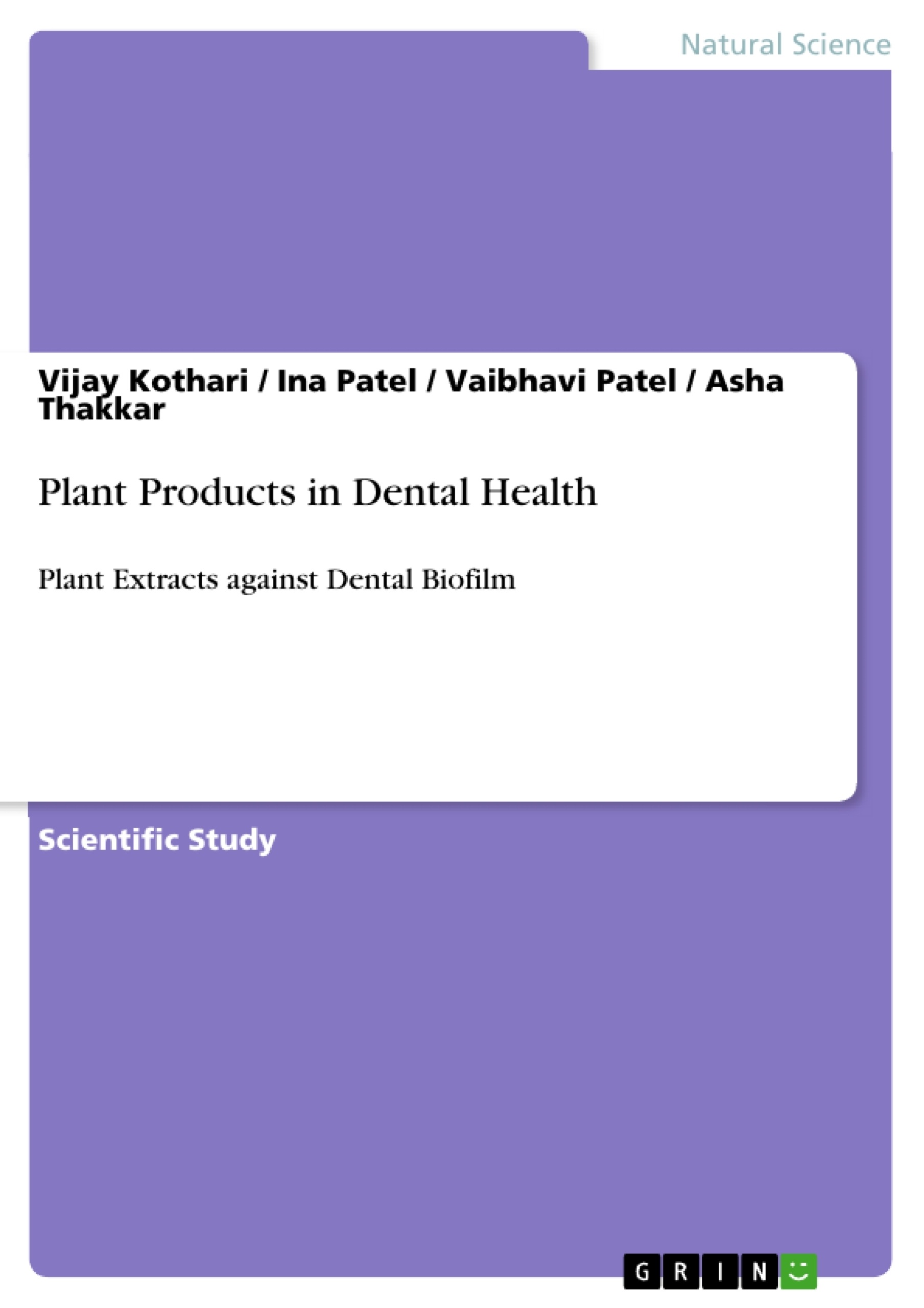Extracts of Emblica officinalis seeds prepared by Microwave Assisted Extraction (MAE) method were evaluated for their antimicrobial property against planktonic form of certain human/plant pathogenic microbes. Additionally, seed extracts of E. officinalis, Tamarindus indica, Manilkara zapota, Phoenix sylvestris, Syzygium cumini, and selected phytocompounds were tested against multi-drug resistant Streptococcus mutans (a major pathogen associated with human dental caries) in its planktonic as well as biofilm form. Ability of these extracts to eradicate and kill S. mutans biofilm was investigated. E. officinalis extracts exerted bactericidal action against S. mutans, Pseudomonas aeruginosa, and Vibrio cholerae. Acetone extract of S. cumini, and curcumin were able to inhibit S. mutans at appreciably low concentrations of 50 µg/mL and 20 µg/mL respectively. T. indica and S. cumini seed extracts were able to kill ≥ 80% cells of S. mutans in biofilm, in the concentration range of 500-1000 µg/mL. These extracts were able to achieve ≥ 95% killing of S. mutans biofilm at concentrations ranging from 600-2000 µg/mL. Ability of the potent extracts to kill S. mutans biofilm did not seem to be much dependent on eradication of the biofilm. Extraction efficiency was found to have a good correlation with antibacterial activity.
Inhaltsverzeichnis (Table of Contents)
- Introduction
- Review of Literature
- Materials and Methods
- Results and Discussion
- Conclusion
Zielsetzung und Themenschwerpunkte (Objectives and Key Themes)
This research aims to explore the potential benefits of plant products in maintaining dental health. The study focuses on identifying and characterizing plant-derived compounds with antimicrobial properties and their effectiveness in combating oral bacteria, particularly those associated with biofilm formation.
- Antimicrobial Properties of Plant Extracts
- Biofilm Inhibition and Disruption
- Dental Health Applications of Plant-Derived Compounds
- Microwave-Assisted Extraction Techniques for Plant Products
- Evaluation of Antibacterial Activity in Planktonic and Biofilm Forms
Zusammenfassung der Kapitel (Chapter Summaries)
- Introduction: This chapter provides a comprehensive overview of dental health issues, particularly those related to oral bacteria and biofilms. It highlights the significance of developing alternative approaches for combating dental infections, emphasizing the potential role of plant products.
- Review of Literature: This chapter delves into existing research on the antimicrobial properties of plants and their applications in dentistry. It summarizes the literature on specific plant species, their bioactive compounds, and their mechanisms of action against oral bacteria.
- Materials and Methods: This chapter outlines the experimental procedures and methodologies employed in the study. It details the plant materials used, extraction techniques, microbial strains, and the methods for assessing antimicrobial activity, biofilm formation, and other relevant parameters.
- Results and Discussion: This chapter presents the experimental findings, analyzing the antimicrobial efficacy of the plant extracts against different oral bacteria. It discusses the mechanisms of action, the influence of extraction methods, and the potential applications of the identified compounds in dental health.
Schlüsselwörter (Keywords)
This research focuses on the following keywords: dental health, plant products, antimicrobial activity, oral bacteria, biofilm, microwave-assisted extraction, minimum inhibitory concentration (MIC), minimum bactericidal concentration (MBC), confocal scanning laser microscopy (CSLM), and antimicrobial susceptibility testing (AST).
- Quote paper
- Assistant Professor Vijay Kothari (Author), Ina Patel (Author), Vaibhavi Patel (Author), Asha Thakkar (Author), 2013, Plant Products in Dental Health, Munich, GRIN Verlag, https://www.grin.com/document/267909



